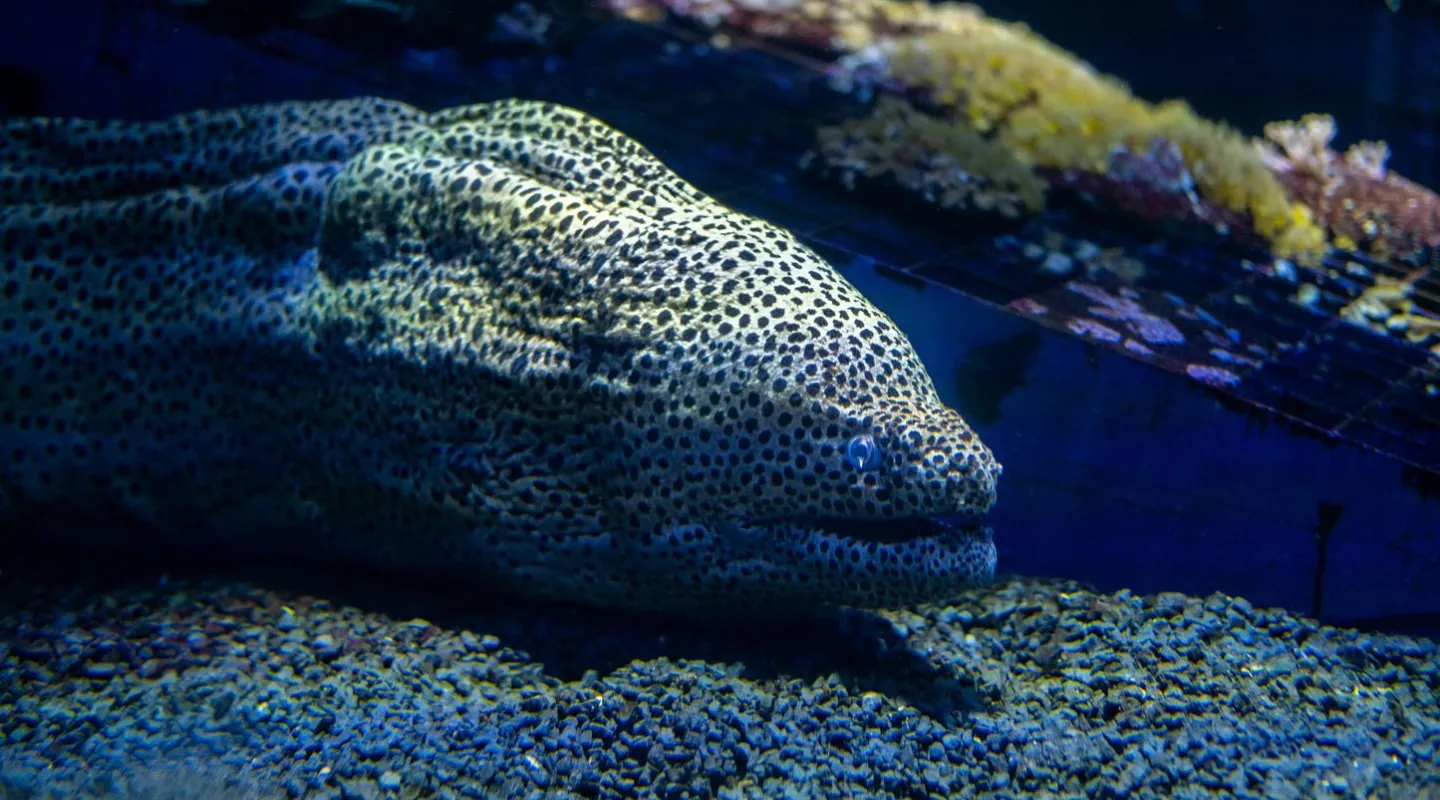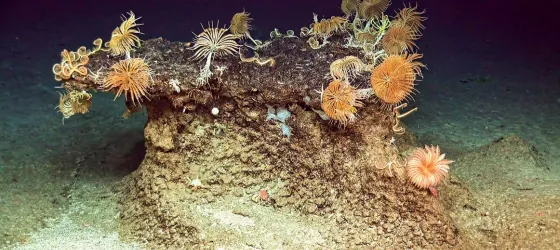Even though they do not have any venom, the bite can be very painful; due to the power of their jaws and the number of teeth, an infection can quickly develop. Therefore, it is advisable to refrain from trying to touch them to avoid frightening them.

Identity card
Leopard moray eel
- Scientific name:
- Gymnothorax favagineus
- Family:
- Muraenidae
- Class:
- Actinopterygii
- Phylum:
- Chordata
- Year of description:
- Bloch & Schneider, 1801
- IUCN Status:
- Least Concern
- CITES-status:
Not Evaluated
- Distribution:
-
South of the Red Sea, from the Indian Ocean, in the tropical West Pacific
- Habitat:
-
They live in rocky crevices down to a depth of 50 m and rarely venture far from the seabed.
- Size:
The average length is 2 metres, but it can grow up to 3 metres long. It can weigh up to 18 kg.
- Diet:
-
Fish and cephalopods.






























